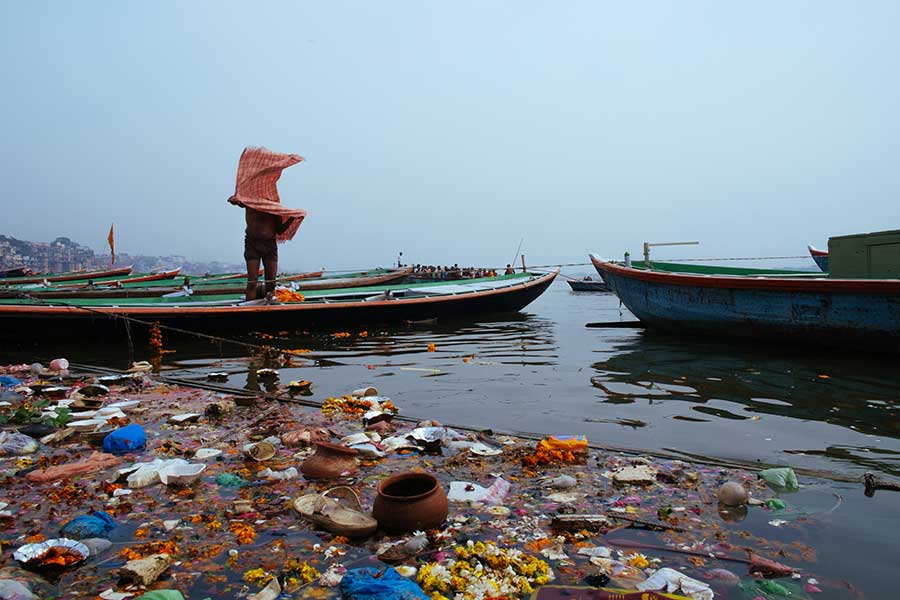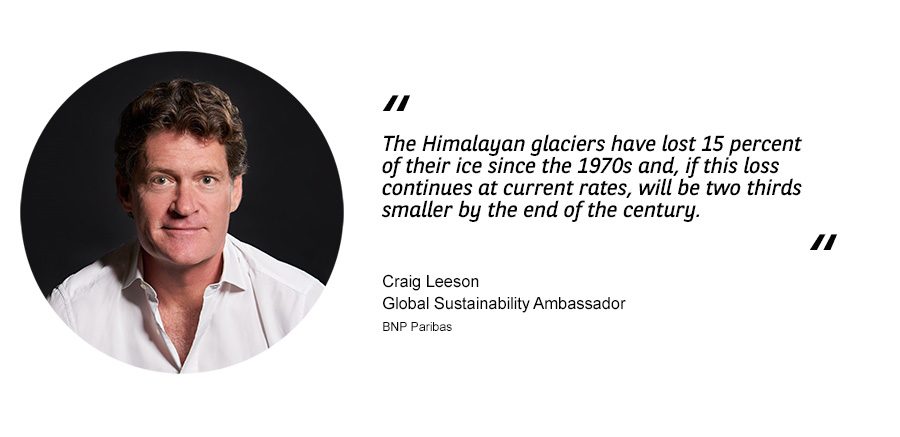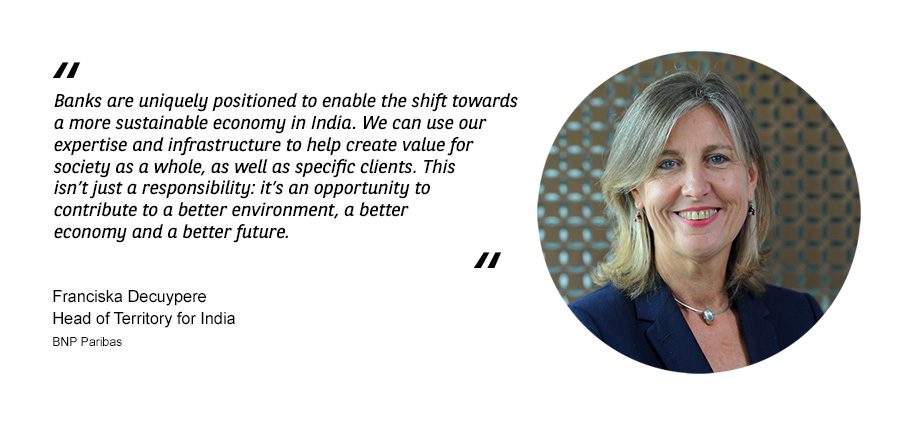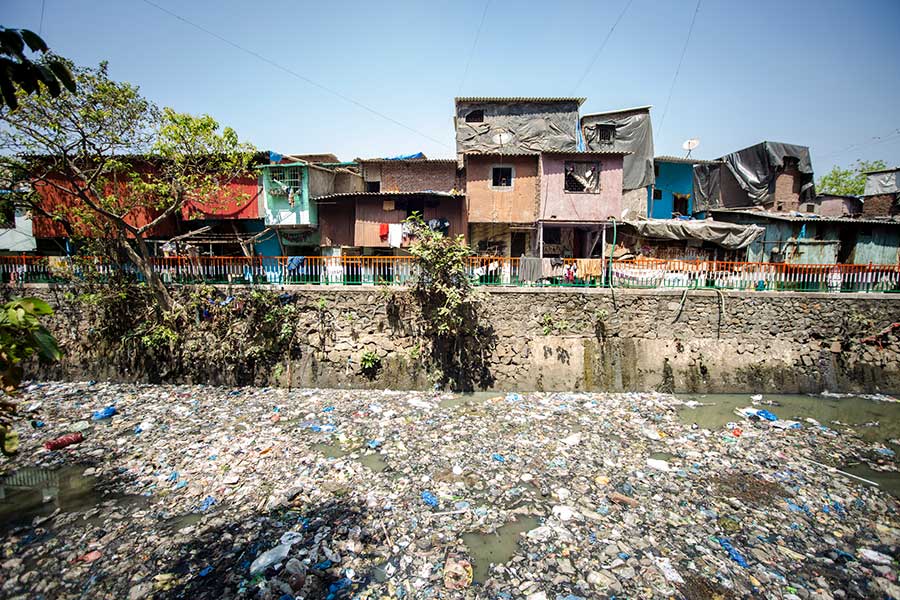With its 1.3 billion strong population in lockdown and
industry ground to a halt by the Covid-19 pandemic, India’s Himalayas are once
again visible from the Punjab city of Jalandhar. After just three weeks of
enforced confinement, Indians have flooded social media with pictures of
snow-capped mountains last seen more than 30 years ago.
The spectacular peaks offer a rare glimpse of hope for
a country locked in a fierce battle against the twin perils of climate change
and contamination, which have left India’s rivers sick. Today they are choked
with plastics, sewage and other pollutants, while the Himalayan glaciers that
nourish many of these watercourses are melting at unprecedented rates, leaving
India’s human and economic health under threat.
India is among the world’s most water-stressed countries and it is now at a tipping point. Home
to over 1.3 billion people, the country continues to be ravaged by floods,
while also hit by crippling droughts each year. Despite this paradox, water
remains a scarce resource across the country, exacerbated by its massive waste
management challenge and increasing irregular weather patterns.
The country’s water crisis and climate challenges can
be addressed, experts say, but doing so will require close collaboration
between private and public sectors, prompting a dramatic rethink of the types
of funding required to address the growing challenge.
“In Mumbai, all the problems you see throughout
India’s rivers are right there in front of you,” says Craig Leeson, Global
Sustainability Ambassador at BNP Paribas. “The
water is black and it smells putrid. There are huge numbers of people living
right next to where sewage and garbage are being deposited into the waterway.”
Plastic threat, glacial retreat
The facts are bleak. Some 70 percent of water in India is contaminated and the country ranks 120th out of 122 countries in WaterAid’s Water Quality Index. Apart from diseases caused by drinking or cooking with dirty water, India’s daily haul of 26,000 tonnes of plastic waste carries its own risks to human health.
Untold numbers of single-use plastic bottles and containers end up in the country’s watercourses and then the sea, where plastic-related contamination is having an increasing effect on the ecosystem, including fish – a key source of protein for people. “We’re ultimately becoming the filters of our own pollution,” says Mr Leeson. “It goes full circle and comes back to us in our food and water.”
|
How to nudge change With some eight million tonnes of plastic waste entering the oceans each year, immediate action to reduce the use of so-called “disposable” plastics is vital. As awareness of the scale of this problem grows, companies are starting to ban single-use plastics from their operations: BNP Paribas has launched a Green Company for Employees (GC4E) scheme to eliminate them from its workplaces around the world. In asking its 200,000 employees worldwide to think about ways to eliminate plastic in the workplace, the bank wants to embed in its staff a “change” mindset that also permeates their personal lives. “It starts with that awareness,” says Mr Leeson. “The great thing about GC4E is that it’s designed to help staff become more aware of how they can take action at work, as well as at home and in society, to address many of these fundamental issues that are the same worldwide.” |
Far from the ocean, mighty rivers like the Ganges, Indus and Brahmaputra rise among glaciers high in the Himalayas. Sometimes called the earth’s Third Pole, the Himalayas hold around 600 billion tons of ice in these glaciers. But scientists say some eight billion tons have been lost annually in recent years, putting at risk some 800 million people who depend in part on seasonal runoff for irrigation, hydropower and drinking water.

Mr Leeson says that the Himalayan glaciers have lost 15 percent of their ice since the 1970s and, if this loss continues at current rates, will be two thirds smaller by the end of the century. “Once they’re gone, they’re gone forever,” he says. “We won’t have that water for agriculture or manufacturing any more. That is going to cause people to leave their villages and migrate to where they can find food and water.”
Financing the solution
The BNP Paribas Forbes India Sustainability Changemakers Summit brought together a group of industry leaders to explore how India’s water crisis can be resolved.Speakers reiterated that compliance with waste water regulations was improving – but that the seriousness of the problem called for fresh action. Some advocated financial incentives for using recycled water for industrial purposes rather than fresh water and using new technologies to enable better management of water demand and recycling. They also stressed the importance of water recycling projects being viable for banks to finance.

Franciska Decuypere, Head of Territory for India at BNP Paribas, told the forum it is essential that banks help to address urgent social and environmental problems like India’s water crisis through their ability to mobilise capital and structure financing.

“Banks are uniquely positioned to enable the shift towards a more sustainable economy in India,” says Ms Decuypere. “We can use our expertise and infrastructure to help create value for society as a whole, as well as specific clients. This isn’t just a responsibility: it’s an opportunity to contribute to a better environment, a better economy and a better future.”
There is already proof of concept that financial institutions can help deliver solutions to environmental challenges in India, adds Ms Decuypere.
The Sustainable India Finance Facility (SIFF) is a partnership facilitated by the United Nations Environment Programme, the World Agroforestry Centre and BNP Paribas. It aims to unlock capital from investors and private sector financial institutions that can be channelled into overlooked environmental sectors in India.
Instead of a conventional approach to lending where all the risk is concentrated with the borrower, SIFF uses a unique distributed risk model that involves different participants assuming responsibility for segments of risk along the value chain. This helps to make projects that deliver real social, environmental and economic returns viable for commercial lenders and investors.
The partnership is supporting projects that can benefit India’s rivers as well as delivering broader social and environmental gains. In 2018, Andhra Pradesh announced plans to become India’s first completely natural farming state by 2024. The Zero-Budget Natural Farming (ZBNF) initiative involves six million farms transitioning away from conventional synthetic chemical agriculture over a six year period.
Instead, they will return to natural farming methods that eliminate external inputs, use local resources to rejuvenate the soil and restore the health of the ecosystem through diverse, multi-layered cropping systems. Farmers involved in the scheme will no longer need to borrow to buy fertiliser – and the contamination of local rivers by chemical-based fertiliser products will be reduced. SIFF is facilitating the roll out of ZBNF, targeting investments that will amount to US$2.3 billion by 2024.
“Healing India’s rivers will require a wide range of initiatives that improve access to clean water and help us better manage water, waste and pollution,” says Ms Decuypere. “The melting of glaciers in the Himalayas also underlines the importance of reducing carbon emissions globally. These are complex challenges but we are determined that finance should be part of the solution – and SIFF gives us a valuable example of how that can work.”

